#trainwreck post
Explore tagged Tumblr posts
Note
cheese muffin or cherry muffin
cheese muffin😟 d
10 notes
·
View notes
Text
it's so funny how often "Fjord and Caleb are an underrated dynamic" because while Campaign 2 was running, it was one of THE most talked about dynamics because it is just constantly So Much™ all the time — and yet, despite its widely acknowledged quality and popularity, I still agree: underrated dynamic, needs to be remembered and talked about even more
#this post isn't about the ship specifically but their relationship in general#but I would be remiss if I didn't shout out the ship‚ which I have often described as#“would not have worked out but it would've been the sexiest trainwreck disaster ever”#Critical Role things
224 notes
·
View notes
Text
4th of July, a perfect day for Bananafish
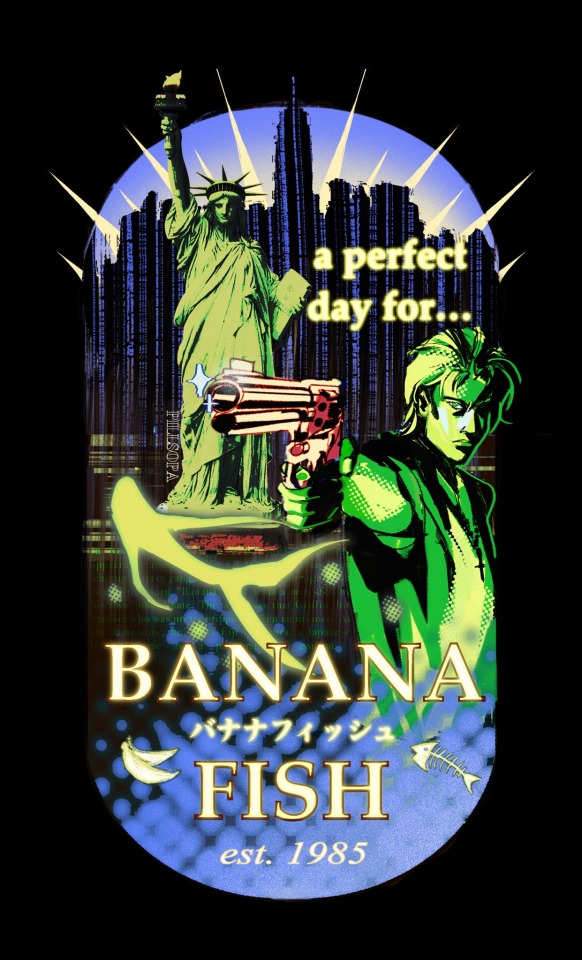
up as a print here :-)
#happy 6 years of this absolute trainwreck (affectionate)#read a follower’s twt post about how clever it was to have released the first banana fish episode on july 4#i gotta say i love how minds work#anyways OKAYYY GRAPHIC DESIGN!!!#will be putting this up on my Inprnt :)#banana fish#ash lynx#my art
524 notes
·
View notes
Text
every hot girl is extremely loyal to the mediocre book series she read at age 11
#thg this is never about u baby#however#school for good and evil#this post is dedicated for you you absolute trainwreck of a series#nostalgia#gallagher girls#alex rider#dork diaries#books#reading#bookworm
179 notes
·
View notes
Text
Yeah actually France has ∞ sides and is in fact a circle
why is france called the hexagon when its abundantly clear that it’s a pentagon
92K notes
·
View notes
Text
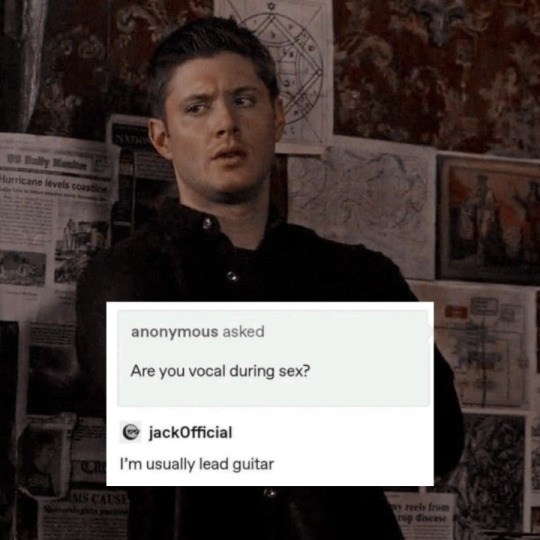
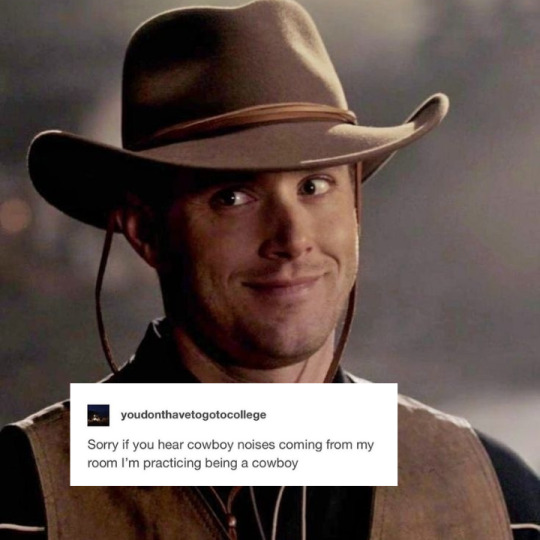
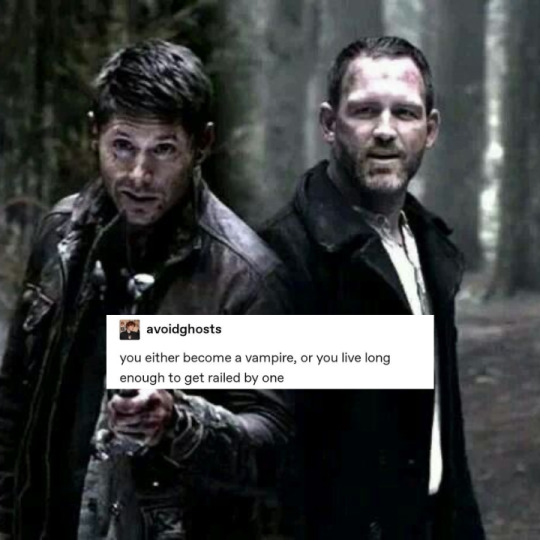
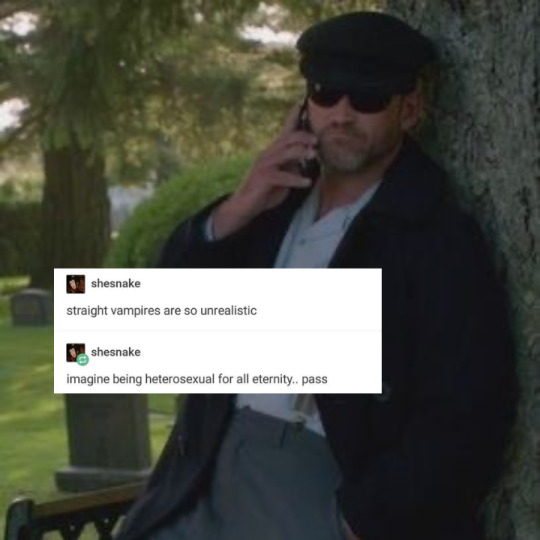
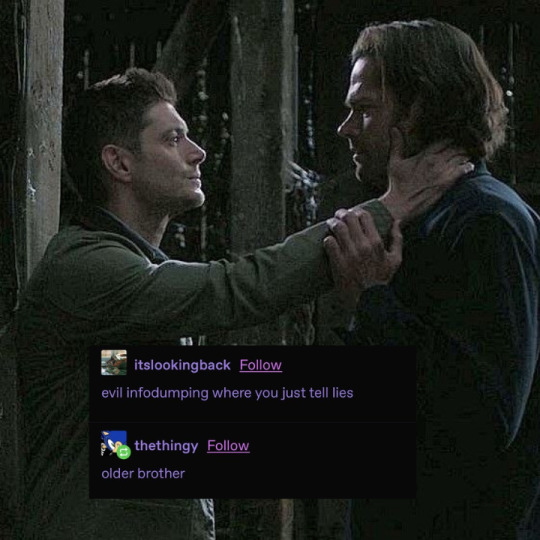
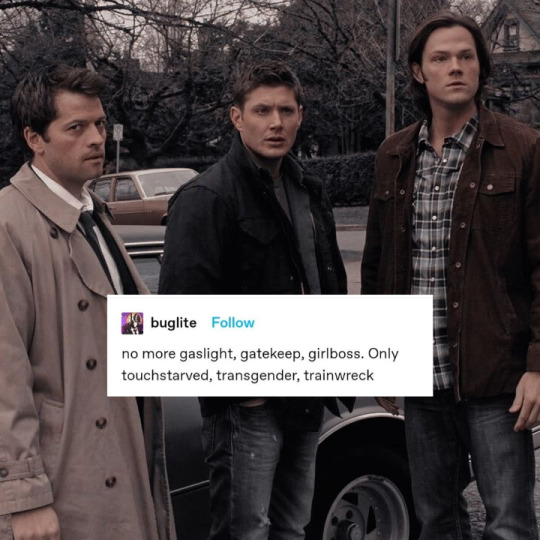
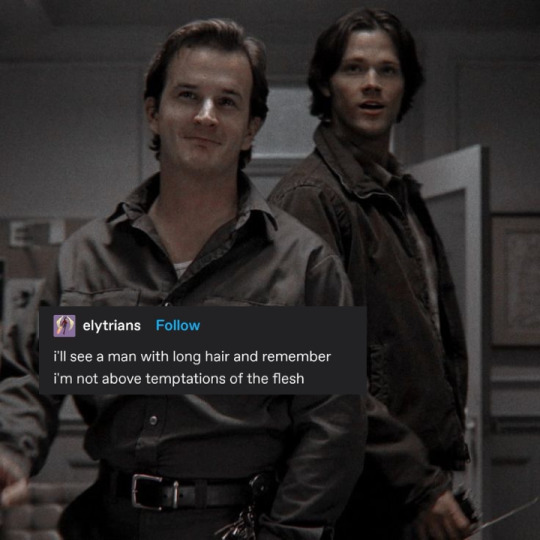
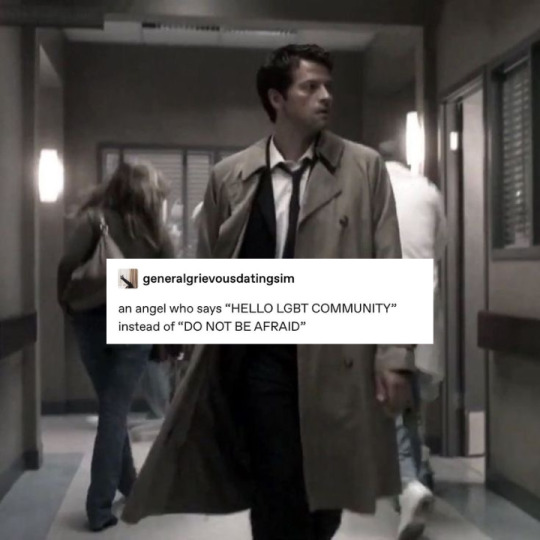
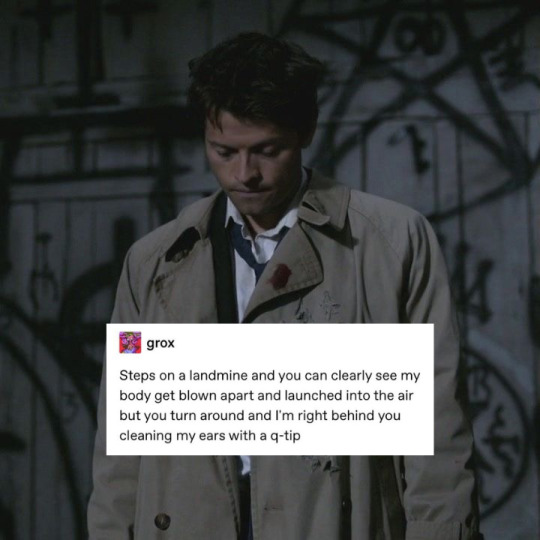
some more fun spn textposts that ain’t destiel coz i do ship other ships like sabriel and whatever dean and benny is (tho I havent watched the purgatory arc 😭)
#spn#supernatural#dean winchester#castiel#sam winchester#gabriel spn#benny lafitte#sabriel#team free will#cas is touchstarved dean is trans and sam is trainwreck btw#i could make a whole thing about trans dean#love me some trans dean#spn text posts#text posts#textposts#spn text post
883 notes
·
View notes
Text
Vegetta: And on Valentine’s Day, we have to go look for women.
Rubius: Women?
Luzu: Or men, anyone can– 🤨
Vegetta: People can look for whatever they want.
Rubius: Whatever they want, yes... And we can go after other Karmaland members? [He stares longingly at Vegetta]
Vegetta: [Oblivious] You know what– it could even be a nun!
Rubius: Ah. Yeah, a nun would be ok… 😔
Luzu:

Rubius' poorly-conveyed feelings, Vegetta being oblivious, and Luzu watching the trainwreck unfold: a highlight from Karmaland 4.
[ Full Subtitle Transcript ↓ ]
—
Vegetta: We have to make an event for… In February, for...
Rubius: February?
Luzu: Saint Valentine’s. A day for lovers!
Vegetta: And on Valentine’s Day, we have to go look for women.
Rubius: Women?
Luzu: Or men, anyone can–
Vegetta: People can look for whatever they want.
Rubius: Whatever they want, yes... And we can go after other Karmaland members? [He stares longingly at Vegetta]
Vegetta: [Oblivious] You know what– it could even be a nun!
Rubius: Ah. Yeah, a nun would be ok…
Luzu: [Laughs in disbelief]
Vegetta: And marry her.
Luzu: [Laughs] Rubius sad.
Rubius: [Laughs]
Luzu: [Cracks up laughing]
Vegetta: What happened, what happened? I didn’t catch it.
Rubius: Nothing, nothing– [Starts thanking subs & donos]
Luzu: [Dying]
Vegetta: What happened? I didn’t catch it, I didn't catch it!
Rubius: [Continues thanking subs & donos]
Vegetta: ...What happened?
Luzu: Nothing, I’m actually just Luzu sad–* I dunno why I’ve been laughing so much today, lord. I'm just gonna- I'm moving to this corner–
* Luzu was in his "evil Luzu" arc at the time, since this was after he lost the Karmaland election and was betrayed by someone he cares about, so technically he was breaking character here.
#Vegetta777#Rubius#Rubegetta#Karmaland#Karmaland 4#Vegetta#Luzu#LuzuVlogs#To borrow my tags from the first time I ever posted this (because they still make me laugh):#Rubius sounds so dejected here if my crush was THAT oblivious I think I'd chew through a live wire#Luzu's laughter makes me laugh so much he's having the time of his life watching this trainwreck play out#This is especially funny because it's one of the first times (as far as I can remember) Rubius did this#and he got shot down so frickin hard lmfao I'm so sorry dude#I love Luzu being like ''Now hold on. gay rights first of all-'#Edited#Translated#Subtitles#I can't believe I forgot to post this on Valentine's Day#I hope this queues correctly#Edit: It didn't#Thanks for checking my translations Bell!
169 notes
·
View notes
Text
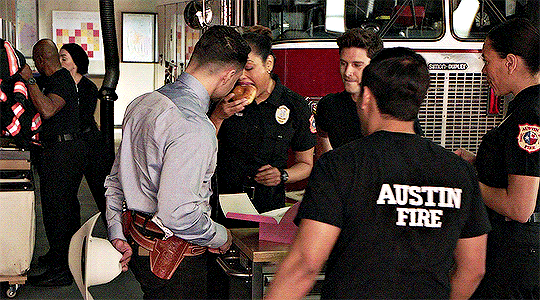
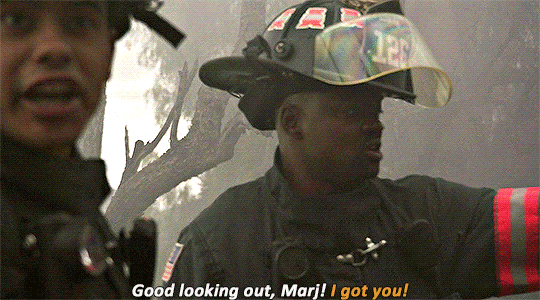
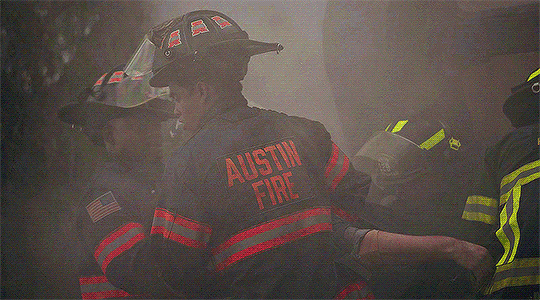
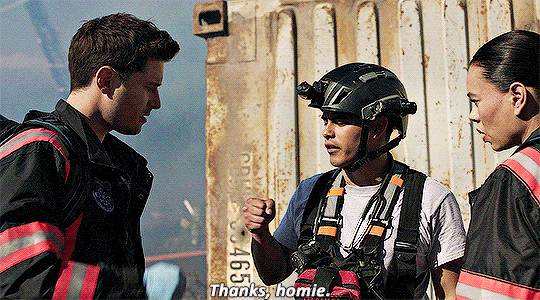
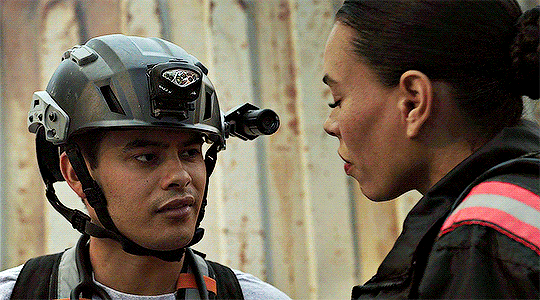
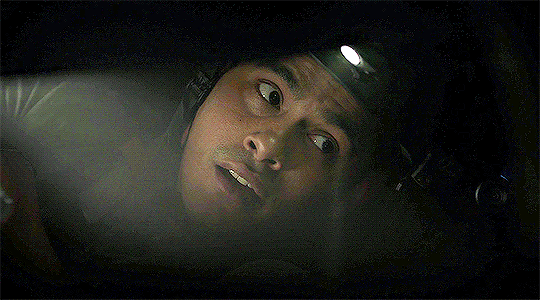
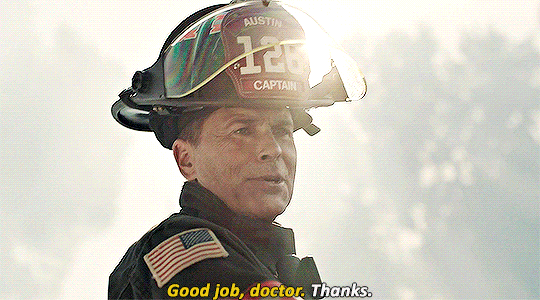
911: Lone Star | 5.02 -> Mateo with his family

#911 lone star#911lsedit#tw: food#mateo chavez#tk strand#paul strickland#carlos reyes#tommy vega#owen strand#marjan marwani#nancy gillian#my gifs#queued post#they’re a familyyyyy#they’re just missing Judd. someone go get our teddy bear back!!#episode: s05e02 trainwrecks
277 notes
·
View notes
Text
I love scripts I love reunions and I love additional emotional damage
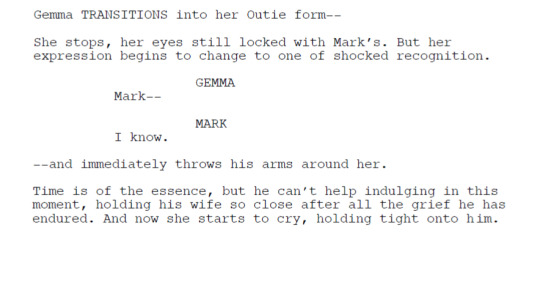
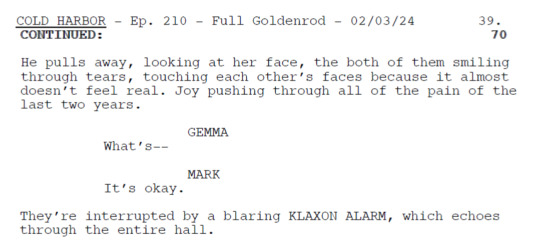
#maybe we should all just kill ourselves or something#it's all a trainwreck#but joy pushing through all of the pain of the last 2 years GOT TO ME ALRIGHT#severance what is grief if not love persevering#drinking the cold harbor juice like it's water at 3am#my beloveds... my beloveds#gemma scout#mark scout#markgemma#gemmark#severance#severance posting#severance spoilers#severance s2#severance season 2
76 notes
·
View notes
Text
the fact that Neskantaga is still under a boil water advisory in 2024 is driving me insane.
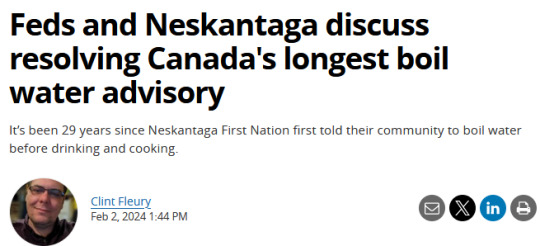
for context: Neskantaga First Nation is a small community in Ontario 436 km [270 miles] northeast of Thunder Bay and 180 km [111 miles] northeast of Pickle Lake. They have been under a boil water advisory since February 1995 - nearly 30 goddamned years.
Progress on a new water treatment plant has been ongoing. Neskantaga First Nation's original water treatment plant was built in 1993, but the journey for a new one has undergone numerous issues involving the government and contractors, as well as shoddy construction and hazardous spills.
Construction is still listed as underway with no ETA on the advisory being lifted.

The Canadian Government perpetually drops the ball when it comes to safe water on reserves. In December 2023 the government introduced Bill C-61. It addresses clean drinking water across all First Nations communities, but Chief Chris Moonias of Neskantaga First Nation, the nation with the longest boil water advisory in the entirety of Canada, wasn't even consulted. The bill itself has also been met with much skepticism and criticism due to its vague wording, and rightfully so.
That said, despite the hells of the government there is some positive to be had. 144 long-term drinking water advisories have been lifted between November 2015 and January 2024.
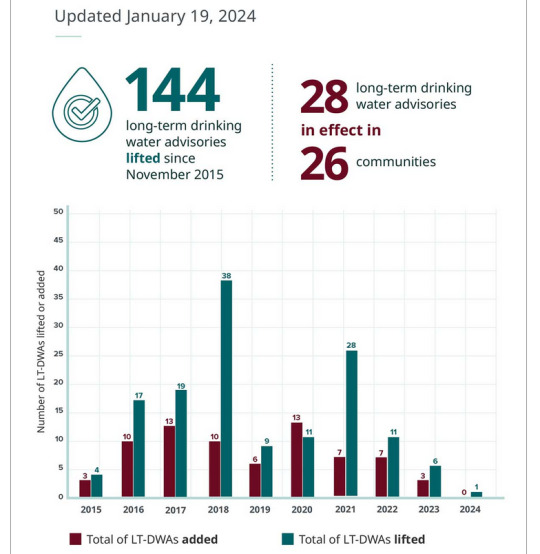
I like to hope the 2021 report from the Auditor General regarding Indigenous Services Canada and its shortcomings will give them insight on how to better optimize their management going forward. So far 2022 and 2023 has continued the downward trend with fewer and fewer long-term water advisories, but it's important to know if these completed projects are successful in guaranteeing clean water to these communities for the long-term future. Is ISC actually following up with proper support.
On February 1, 2024 Indigenous Services Canada posted a statement that the Minister of Indigenous Services has met with Neskantaga First Nation Chief Christopher Moonias to discuss resolving the water advisory and create a 12-point action plan. I know it's asking a Lot within 11 months, but I really really hope the Neskantaga community won't see their long-term water advisory hit 30 years.
In the meantime, Neskantaga First Nation receives donations through Gathering of Rivers for Community Care. If you're able, please consider donating.
thanks
#Neskantaga First Nation#long post#i've been watching this trainwreck closely for the last who knows how long#genuinely i fucking hope ISC can get their shit together and get this community some clean fucking water#it's unacceptable that it's gone on this long#canada#canadian politics and issues
472 notes
·
View notes
Text
while on the topic of iron posting. a very small very insignificant thing that i really enjoy is that nobody really harasses it for not speaking. and like. we don't know precisely why it doesn't speak. it could be because it's mute, it could be due to an unseen injury, it could just be a selective choice, it could be that it never bothered to learn human language to begin with, etc etc. but there's never been a scene (at least as far as i can recall) where mr iron is specifically called out or pressured or anything of the sort. not even by its own haters 4 haters coworkers. and yeah this is realistically probably because its an ESPECIALLY deadly space bat that could kill you six ways from sunday if you pissed it off, but also, y'know, sometimes it's really nice just having a mute character that's treated Normally for once
#mr iron doesnt talk and that's just. A Fact Nobody Questions. it's just what it does.#nobody's like ugh stop using that stupid blackboard. they're just reading and responding bc that's just its method of conversation#and again! we don't actually know why it does that! for all we know its always been mute. or it chose that for a very specific reason#but. yknow. idk. in an incredibly weird halfway backwards sorta way. it's just really nice to have it treated as nbd#idk maybe this post is incoherent and im just going insane bc today is. A Trainwreck lmao#yin-thoughts#fallen london#a lot of nonspeaking characters (and real life people) usually get overlooked or dehumanized on some level#bc they (supposedly) cant communicate for themselves (at least on a level people understand)#idk. it's like. suddenly if u cant verbally express urself ur just not on the same level as people#i like that iron is different. i like how nobody really complains or draws that much attention to it.#and yes. this is almost definitely just because it's a giant evil space bat in a position of Significant Power#that can and Will kill you in an instant#but. it's still nice nonetheless.
111 notes
·
View notes
Text
flint doodle from memory - i guess i like trying to draw him from memory and do my best getting better each time... was my excuse to play with even more effects as I Do anyways please ignore the horrid canvas cropping
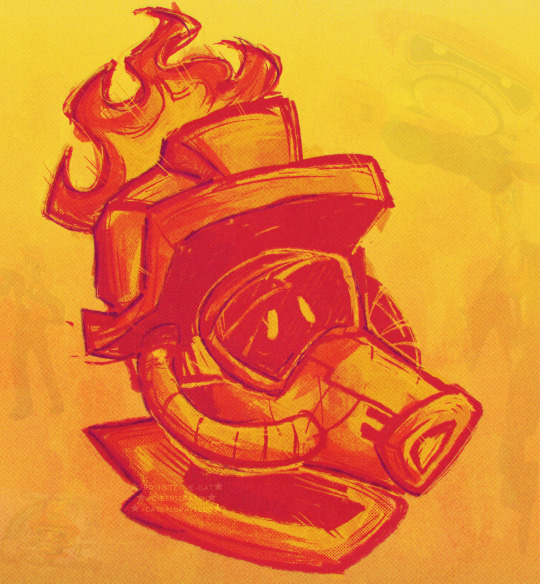
#horribly late posting spree while my brain is gone on HALLEWHEEEN#as my apology for the happy halloween meme being late by Probably several months ill take my time w it#also i got hit by sickness at the worst time this month was a trainwreck... anyways#PERSONAL STUFF ASIDE. HAVE A FINT#TTCC#toontown#Toontown Corporate Clash#firestarter#guz art#i better not fall asleep posting my other stuff . or i suffer truly living up to my name of the sleepy snozer c.athal
90 notes
·
View notes
Note
Me watching my Inquisitor walk off with Solas at the end of the game like :) "aw cute ..hey if Mythal hadn't told you to stop would you have murdered her,," (I haven't played the other endings yet).
This!!!
(Obviously, not murdered her personally, but he absolutely had no qualms about doing the ritual once more - knowing the consequences of it.)
Let me preempt this by saying that I wanted there to be a happy/fulfilling ending to Solas and Lavellan. I'm not a blind hater! Just someone who finds it very hard to put my own Lavellan in the place of the 'Lavellan' provided to us in DATV.
The Solas/Lavellan relationship already was kind of iffy (power imbalance, constantly dragging her culture, removing her vallaslin/then dumping her, constantly lying to her, etc...) but DAI did a great job of making you feel sympathetic towards his plight - especially after Trespasser! He woke up in a world so divorced from his own that it was unrecognizable - the people he had done so much for were suffering from the consequences of his actions, justified as they may have been at the time (stopping the evanuris). His actions led to great suffering in the pursuit of preventing even greater suffering.
Even after we learned of his plans in Trespasser, it was very much: "cool motive, still murder."
I felt sympathetic towards Solas and the implication that we could change his mind, given to us in Trespasser, gave me hope that we would be able to convince him of another path. That he could find a place in Thedas as it is now and look to the future. That was why I chose the option to try and get through to Solas, despite knowing that his plan would lead to mass death/terror if it went ahead.
I always expected the Veil to fall at some point, but i was hoping there'd be some more nuance to it than: veil gone, demons everywhere, lots of people die. Well, I was very wrong lmao.
But, if anything, the game made me entirely unsympathetic towards Solas.
The moment he started his ritual he chose the old elven empire over Lavellan - over her family, friends, home, culture, and anything else she may have loved/valued.
And he did this twice.
He chose to pursue lowering the Veil - knowing that thousands would likely die. For all his insistence of 'minimizing the damage' he went in knowing that many more people would die because of his actions. There was no justification of stopping the evanuris this time either - no excuse of not knowing the potential consequences of his actions like the first time.
He chose to begin the ritual that ended up releasing the Elven Gods - knowing full well the risks it entailed.
He killed Varric - whether by accident or not, it was by his hand.
He chose to use blood magic to manipulate Rook into thinking that Varric was alive - puppeting his corpse around in Rook's eyes and putting his words into Varric's mouth.
He chose to manipulate, mold, and guilt Rook into the old 'switcheroo' in his mind palace/regret prison
He chose to 'free' the elven people by bringing down the Veil - regardless of their feelings about it (elven Rook can call him out on this!), never mind the consequences or ramifications of a bunch of people suddenly having their bodily autonomy overwritten by now being magic/having immortality.
He looked at the devastation caused the by the Gods and still went ahead with trying to bring down the veil again.
These are the thing he does in-game - not even mentioning making the dwarves/titans tranquil, creating the blight, started the chain of events that led to SOUTHERN THEDAS BEING DESTROYED, and taking my good gear from Inquisition!
Aside from the 'all lore leads to Solas' reveal just being really dull it also does nothing to help with making me sympathetic to him as a character. The audacity of this man to say: "it was like walking in a world of tranquil" when he fucking lobotomized the dwarves/titans is wild in retrospect.
If he didn't do the ritual at the beginning, if something else went wrong and that resulted in the God's being released, I could understand why a Lavellan would still want to get through to him. It would make sense - she could stop him from doing it again at the end too! You can still have him conflicted and torn between the restoring the past or pursuing the future - but this doesn't happen!
He never chose Lavellan in this game! Hell, it's Mythal who convinces him to stop?!! He owes her nothing! He's learned nothing from this!!! He's only stopped because Mythal 'pardoned/freed' him - once again showing that he values the ancient elves/mythal over her!!!
How impactful would it have been to have him choose Lavellan over Mythal! To show us this! Mythal, who 'crawled through the ages for a reckoning' (which was retconned to her being sad about the elves lmao) telling Solas to go through with the ritual and him touching grass and saying 'no'.
It's something I feel was wildly out of character for him as well - he never came across in DAI as being subservient to Mythal, if anything the ending cutscene gave me the impression they were equals?!
After everything he did in this game - after all we learn about what he did in the past - I had no interest in reasoning/appealing with his ass. None whatsoever. My inquisitor/Lavellan asking if Solas can be reasoned with only made me regret making that choice - perhaps other people's inquisitor's would say that, but mine would not, especially after everything that happened in game.
She came across as delusional: standing on the ruins of a blighted Minrathous, the south blighted to hell, dead all around them, blight tentacles everywhere, a gaping hole in the Fade right next to them:
Lavellan: "I forgive you! All you have to do is stop." Solas: "But I cannot."
Boom! There it is.
At this point it's not romantic, it's just sad! Sad that she's spent 10 years pining after a man who seemed to learn nothing at all from what happened in DAI.
------------------------
There should have been some sort of a dialogue option with Lavellan right before you go into the big fight - she can ask you what you think of Solas, if he's truly regretful for everything that happened, and then you can give her an answer that can 'change' her approach to Solas in the end - giving the player some agency as to how their Inquisitor would actually respond to this.
Ending One: Bye Bye Bye
Rook: "HE'S A GUY."
alternatively, "Look around you! Look at what Solas has done - what he's threatening to do even now after all of this! You gave him every chance to turn away from this path. So did Varric...and look at what he did!"
Lavellan is bitter/angry with Solas: "It seems we never were people to you after all."
Refers to him as 'Fen'harel' and not Solas - dig the knife in deeper, give us angst!
"Just go. You love the Fade, don't you? Enough to do all this - enough to kill Varric for your pride in a dead world that no longer exists. We were never 'real' to you, were we?"
Solas says his goodbyes, expresses his love, and Lavellan steps back.
Solas leaves voluntarily, his 'situation-ship very much over', to stew in his regrets for the rest of his life.
Ending Two: Bittersweet Goodbye
Rook: "Girl, it's been 10 years."
alternatively, "You loved him once, perhaps you still do even now - after all he's done - but love wasn't enough. Love does not excuse this."
Lavellan is firm with Solas, does not excuse his actions, but has a bitter sweet farewell: "I had hoped…it doesn't matter what I hoped. You made your choice - it wasn't me. It wasn't our friends. It wasn't this world. You can make a choice now - if I ever mattered you. If I, if our friends, were ever real to you."
They can have a final goodbye, a goodbye smooch, and then he can go off to the Fade.
Bittersweet ending - acknowledge what they had and then provide closure.
Ending Three: Happy Ending (?)
Rook: "He didn't mean it babe. He's tots sorry."
alternatively, "He seems to regret what's happened - I've seen his memories, his regrets. He believes this is the only path he has. Perhaps you can convince him to find another."
Default Lavellan ending basically
"There is no fate but the love we share" blah blah blah
As happy an ending as it can be when you have Lavellan fuck off to the Fade - leaving behind her life, friends, family, and whatever remains of the world for an eternity.
I'm being mean but I genuinely wanted a happy/fulfilling ending for them both too - despite the fact that this game seems to want that ending as well, it did little to convince me of that. :(
I genuinely liked Solas in DAI - despite his flaws, I thought his romance was compelling and I was hoping to be able to convince him to change/alter his path. I can see what they were trying to do with him in DATV but it's so hard to feel sympathy for him when we see/know the results of his actions. The story in this game is doing anything but convincing me to give him a 'happy ending'.
'Love' can't excuse what he did and neither would my Lavellan.
Also RIP Sandal's Prophecy about the Fade lmao
#super compelling character#stuck in a very uncompelling story#if you're happy with the ending I'm glad! my Lavellan would have kicked his ass though#hard to feel sorry for a guy who ends up inadvertently nuking the world while planning to do a ritual that will kill thousands#Oops I accidentally pressed the nuclear missile codes instead of the regular missile codes my mistake tee hee#i would have LOVED the chance to try and change his mind btw - I WANTED TO SAVE HIM#Gareth David-Lloyd was the highlight of this game#which makes this all the more depressing#delivered the performance of a lifetime for this trainwreck of a romance ending#DAI Solas is superior change my mind#wasn't reduced to an exposition machine either#my cat stepped on my laptop while writing the post - i copied and pasted his message to u all:#uyyyyyyyyyyyyyyyy126qw12qw12qw12qw12qw12qw12qw12qw12qw12qw12qw12qw12qw12qw12qw12qw12qw12qw5rtt#words of wisdom#datv spoilers#datv critical#bioware critical#dragon age the veilguard#solavellan critical#veilguard critical
116 notes
·
View notes
Text
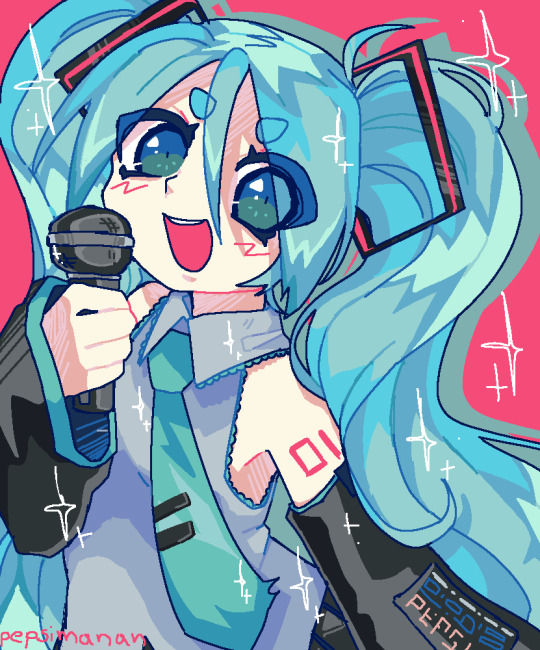
cringetober 2024 day 12 - hatsune miku (≧◡≦) ♡
#i may be busy; but miku is miku#also!#this is my 100th post i think!#this trainwreck cannot be stopped!1!!!1!!#art#digitalart#artists on tumblr#illustration#digital art#digital aritst#fanart#my art#digital illustration#cringe#cringetober 2024#cringetober#vocaloid miku#vocal synth#vocaloid#vocaloid fanart#hatsune miku
100 notes
·
View notes
Text
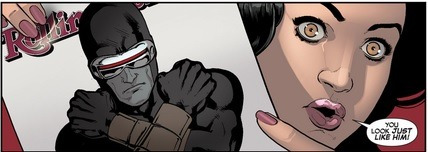
(All-New X-Men #6)
I've kind of blogged something about this before but I never get tired of seeing posts about Logan/Scott/Jean as a throuple (I will literally die of spite before I use a portmanteau) that talk about them as two godlike, immortal beings and "just some guy".
Because on some level, of course, it's absolutely true. Jean is the living embodiment of a Universal Cosmic Force. She can sneeze and wipe out entire star systems.
And Logan is basically immortal. There are a good number of timelines that go forward hundreds, if not thousands of years (see: Powers of X in the Krakoa era) that still show Logan at the prime of his life, always fighting and surviving.
Scott, is, by that standard, just some guy. He's got lasers coming out of his eyes, which is kind of cool admittedly. You could do some interesting analysis on the fact that they seem to be infinite - the only time we see them give out is when HE gives out. Or doesn't get enough sunlight or whatever. But for practical purposes, they've got one real use, the guy's just a very decorative portable cannon.
But what makes Scott special, and on level with the other two, isn't what he is, but what he does.
This is a dude who's led the X-Men since he was a teenager. And as a teenager once talked an entire fleet of Sentinels into attacking the goddamn sun.
This is a dude who co-led a guerilla war against Apocalypse in the future for 10-12 years (admittedly with his goddess wife), then came back as though nothing happened.
He's also the reason for his own last name, because in ANOTHER time traveling bout with the goddess wife, he managed to inspire his own orphaned ancestor to take the name "Summers" in his and Jean's honor.
This is a dude who got possessed by Apocalypse, and repressed him to the point of amnesia, got a sliver of the Void stuck in his head, and repressed that too. Even Phoenix possession took a while to shake that guy.
This is a dude who became the "Boy King of Utopia", uniting the entirety of the mutant race under one banner. Magneto KNELT to him and named him Caesar.
There's also that time he stared down Dracula. Was it a bluff? Dracula thinks so. But he still backed the fuck down. And for a brief period of time, even Namor followed this guy's lead. NAMOR.
This is a dude who, after becoming possessed and ostracized, led a "mutant revolution", becoming a household name among bitter college students everywhere.
He's the kangaroo trial symbol of the entire mutant race, sentenced to death, and his only response is a call to arms published through his lawyer, She-Hulk.
This is a man who's slept with Jean Grey, the Phoenix (back when they were considered separate entities), the Goblin Queen, Emma Frost, and Frenzy, and every single one came back wanting to fuck him again.
Speaking of Frenzy? That dude's sub game redeemed a fucking acolyte!
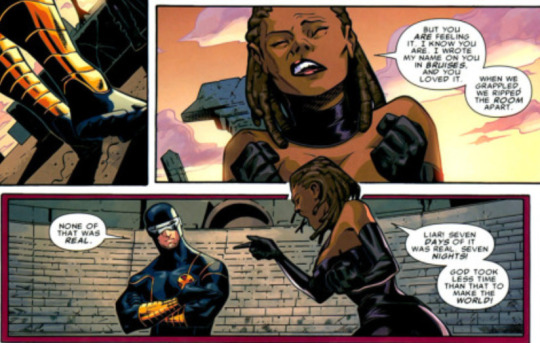
"God took less time than that to make the world!". Okay, take a fucking breath, Joanna. (X-Men Legacy #248)
His kids are practically gods in their own right, and he was only involved in the conception of one of them. The others just kind of showed up one day with a DNA test and got invited in for dinner.
The closest thing he has to a hobby is plotting how to kill dinosaurs:
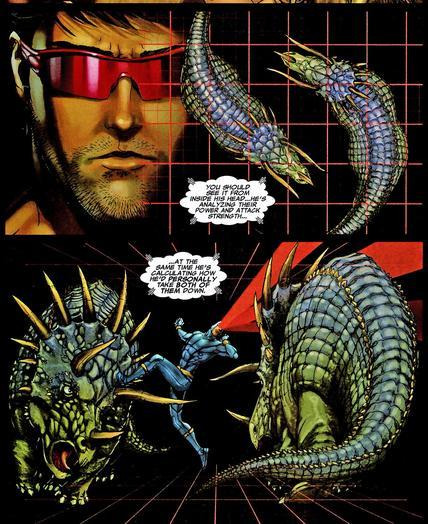
(Uncanny X-Men #495 - and he's fought a LOT of dinosaurs.
Sinister's been obsessed with this man's DNA for years, and yeah, if you're just looking at it in terms of powers, it doesn't make a lot of sense. There are much more powerful mutants out there after all. But when you start thinking about the rest of this, yeah, I kind of want to put him in a petrie dish too.
Heck, he's even argued with the narrator! In another timeline, he could have become an incredibly boring variation of Deadpool!
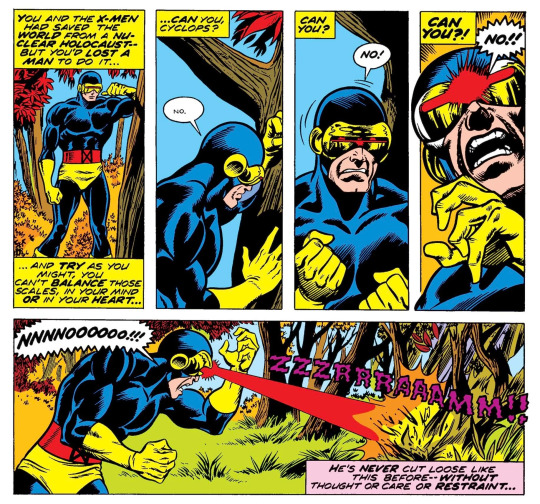
(Uncanny X-Men #96).
I'm just saying, yes, by one point of view the Moon Throuple is two godlike immortal beings and dude who is "just some guy".
But on the other hand, if you had a chance to fuck the unholy combination of Mr. Rogers, Alexander the Great, and the Death Star wouldn't you?
#scott summers#cyclops#I mean don't get me wrong#the dude is also a magnificent trainwreck#but that's another post entirely
63 notes
·
View notes
Text
Trainwreck: Inside the Astroworld Tragedy and Its Devastating Fallout
Netflix recently released a documentary that dives into the tragic events surrounding the Astroworld Festival disaster that took place on November 5th, 2021.
If you’re not familiar with Astroworld, here’s a quick breakdown.
Astroworld is a music festival founded by rapper Travis Scott, first launched in 2018. It’s held in Houston, Texas, and was inspired by the now-defunct Six Flags Astroworld theme park, which closed its doors in 2005. That park was a major part of Scott’s childhood, so he brought it back to life—at least in spirit—through this annual festival.
The event ran in 2018 and 2019, took a pause in 2020 due to the COVID-19 pandemic, and returned in 2021—setting the stage for the tragedy that followed.
I didn’t exactly want to watch the documentary. I lost a friend at that festival—Franco Patino—and the idea of reliving any part of that night was difficult. But I also wanted to understand what really went wrong, who was responsible, and how a tragedy like this could have been prevented.
This post will walk you through some of the key moments from the documentary as I rewatch it, for anyone who doesn’t feel ready—or able—to watch it themselves.
I know there are likely already posts out there recounting the documentary but I wanted to make my own.
Content warning: the documentary includes graphic, real-time footage of concertgoers being trampled, struggling to breathe, and being pulled over barricades for emergency CPR. Please take care before deciding to view it.
Before we dive into the details, I want to take a moment to honor the lives that were lost during the Astroworld tragedy. These individuals attended a concert and never made it home. They deserve to be remembered, not just as names in headlines, but as people whose lives were cut far too short.
Danish Baig, 27 🕊️
Rodolfo (Rudy) Peña, 23 🕊️
Madison Dubiski, 23 🕊️
Franco Patino, 21 🕊️
Jacob Jurinek, 20 🕊️
John Hilgert, 14 🕊️
Axel Acosta Avila, 21 🕊️
Brianna Rodriguez, 16 🕊️
Bharti Shahani, 22 🕊️
Ezra Blount, 9 🕊️
Their stories matter. Their lives mattered. May they rest in peace.
Several key individuals share their experiences throughout the documentary, offering firsthand insight into the chaos of that night. I may be missing some individuals, and I will add them later if I find that.
Kirby Gladstein – Hired photographer for Live Nation
Scott Davidson – Crowd safety expert
Jackson & Samuel Bush – Hired security guards
Mark Lentini – Former commander of the Houston Police Department
Sophia Santana – Registered nurse, concertgoer, and survivor
Jose Villegas – Onsite paramedic
Ayden Cruz – Concertgoer, survivor, and friend of Brianna Rodriguez
Kaia Redus – Concertgoer and witness
Arturo Sanchez – Concertgoer and survivor
Raul, Marcial, and Manuel – Concertgoers and close friends of Rodolfo "Rudy" Peña
Mark Elibert - Journalist and concertgoer

The documentary opens with a montage of the Astroworld Festival—vibrant, fast-paced, and full of energy. But that initial excitement quickly shifts into something darker, setting a clear tone of amusement unraveling into chaos.
“Folks are coming out, complaining of difficulty breathing.”
We’re then introduced to some of the key voices featured throughout the film that I listed, including photographer Kirby, and security guards Jackson and Samuel—individuals who witnessed the disaster unfold from the inside.
From there, the narrative rewinds to November 4, 2021, painting Travis Scott in a positive light. It highlights his community involvement, particularly through his Cactus Jack Charity Softball game, framing him as a hometown hero in Houston before the events of the festival take center stage.
A major red flag surfaces when security guards reveal they were hired less than 24 hours before the festival began.
They state they were in communication until 1-2 am, and were told to be there by 5:30 AM.
Jackson admits they were given “zero security instructions,” and had to rely solely on guidance from other workers on-site—most of whom were just as unprepared.
This lack of training and organization becomes glaringly obvious in the next scene. Crowds surge past formal entrances, trampling fellow attendees and climbing over fences at unsecured checkpoints with little to no resistance.
Mark Lentini, former Houston Police Department (HPD) commander acknowledges the chaos and the crowd’s desperation—but also points out a critical issue: while the festival paid HPD to be present for law enforcement, the police had no role in the event’s planning or strategy.
“We were there for law enforcement. We had no control over how the event was structured or managed.”
We then hear from Scott Davidson, a crowd safety expert, who highlights Travis Scott’s long-standing reputation for inciting high-energy—and often dangerous—crowd behavior. He references several past incidents that raised red flags well before Astroworld: the 2015 Lollapalooza performance where Scott urged fans to jump barricades and rush the stage, leading to his arrest; the infamous Fraunfield clip from that same year where he encourages the crowd after someone steals his shoe; and the 2017 Birds Eye View tour moment where he persuaded a fan to leap from a balcony.
Davidson shares that he was brought in by Live Nation after the tragedy to assess what went wrong. His conclusion is chilling in its simplicity:
“This was a case of blaring warning sirens.”
As the documentary progresses to 4:30 PM on the day of the festival, we’re shown brief glimpses of fans enjoying themselves, capturing the excitement and anticipation in the air. It then shifts to explore the origins of Travis Scott’s vision for Astroworld—both the album and the festival—framing it as an immersive experience meant to reflect the nostalgia of the now-closed amusement park from his childhood, which I mentioned at the beginning of this post.
The timestamp jumps to 7:45 PM, just as SZA’s set wraps. Witnesses recall a noticeable—and alarming—change in the crowd’s energy. With Travis Scott’s performance approaching, the crowd begins surging forward en masse toward the main stage, packing in tighter by the minute.
Jose Villegas, an on-site paramedic, is introduced just as the countdown to Scott’s set begins. Tension builds. The crowd compresses so drastically that even before the music starts, one attendee, Ayden Cruz, describes struggling to breathe, his body forced forward with no control.
At 9:02 PM, Travis opens with ESCAPE PLAN. One witness likens the sensation to an earthquake—his body rising and falling with the swell of the crowd. Another, caught in what they describe as a human “wave,” says it felt like their body was being squeezed from all sides.
The focus then shifts to Sophia Santana, who recalls the moment panic set in—she couldn’t breathe. Her voice trembles as she describes the overwhelming fear and helplessness in the crowd.
Security guards stationed at center stage echo her account, confirming that signs of distress were immediate and widespread. People were visibly hyperventilating, their faces changing color, some crying out for help while others struggled to push their way out of the tightening mass. The crush was intensifying, and with every passing moment, it became harder to ignore that something was going terribly wrong.
Next, we hear from Kirby (Live Nation photographer), who shares a chilling detail: she was “told to lean into the chaos.” At first, she doesn’t grasp the full extent of what’s unfolding—until she sees people desperately trying to climb over the gate into the media area, a supposed safe zone. It’s in that moment that the severity of the crowd’s panic becomes clear to her.
Her account transitions into a 3D visual breakdown of the stage layout. Davidson points out a critical design flaw: while the T-shaped barricade system was intended to improve crowd flow and safety, it ultimately backfired. With only two entry and exit points—one on each side—the layout created a trap with no real escape route once the crowd packed in.

Witnesses describe the unbearable compression, saying there was no space to move, their bodies being shoved left and right with no control. The screen cuts between footage of the live show and clips of attendees visibly struggling to breathe—faces strained, arms raised, some barely staying upright in the crush.
We then hear from Cruz again as he recounts the terrifying moment a “wave” of people slammed into him and his friend, knocking them to the ground. He describes the feeling as being “underwater,” as more and more bodies collapsed on top of him. Panic set in as he realized he was wasting energy trying to fight it—there was no space, no air, no way out.
The documentary cuts to disturbing, real-time footage: people screaming for help, faces contorted in fear, some with arms raised in the crowd like flares. Overlaying this are audio clips of desperate 911 calls, the urgency in their voices impossible to ignore.
We then see Cruz in a moment of sheer desperation—climbing a ladder attached to the Apple Music live broadcast platform, waving his arms, pleading with the crew to “stop the show.” But the music blares on, and the crowd continues to surge.

The focus shifts back to paramedic Jose Villegas, who recalls performing CPR amid the chaos and urgently relaying updates to medical command—who, he says, sounded shocked by what was unfolding. The documentary overlays more distressing footage of the crowd and audio of EMTs communicating back and forth, voices strained as they call for backup and continue resuscitation efforts in the field.
Meanwhile, Santana, having managed to escape the dense crowd, spots an unconscious body lying on the ground. Acting quickly, she checks the person’s pulse and performs sternum rubs—a painful stimulus used to assess consciousness. Miraculously, the man regains consciousness.
That man, it turns out, is also one of the documentary’s witnesses, Arturo Sanchez. He later reveals that after receiving medical care, doctors confirmed he had suffered a heart attack during the crowd surge.
The film cuts to 9:42 PM. Travis Scott is mid-performance of 90210 when he briefly halts the music after noticing someone in the crowd passing out. He asks the audience to make way for emergency responders.
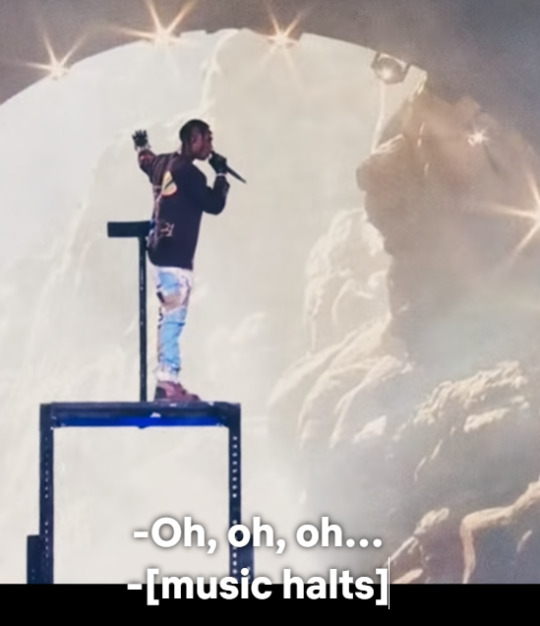
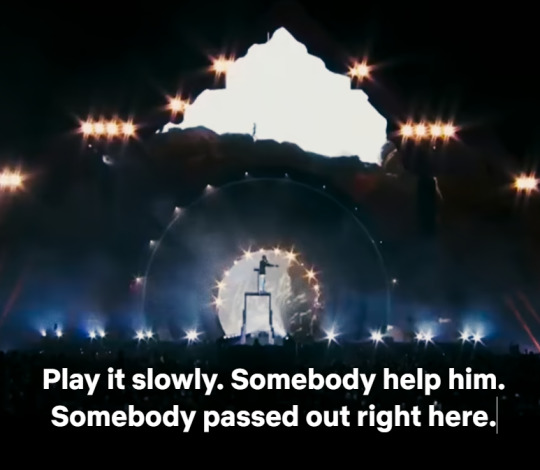
As EMTs carry the unconscious body through the crowd, Travis continues to harmonize softly to 90210, blending seamlessly into a few murmured lines from SKELETONS. Then, as if on autopilot, he finishes the song and begins doing a robotic dance—eerily detached from the urgency unfolding just feet away.
Mark Elibert who was near the front of the stage, reflects on the moment. He suggests Travis didn’t fully comprehend the severity of the situation, saying he looked like he was “trying to figure out what to do next” as the body was being removed.
Clips cut to the back of the crowd, where attendees are seen yelling and motioning with their arms to stop the show. Kaia Redus, another witness, questions why the performance continued. She recalls thinking Travis had to have heard the screams and seen the desperate signals from the crowd.
And yet, after the brief pause, he continues the set.
Davidson emphasizes that the show should have been stopped midway through the set—but reveals a crucial barrier: only two individuals had the delegated authority to make that call, and both were representatives from Live Nation.
Lentini follows up, stating that police were actively searching for one of those two key decision-makers—the Live Nation manager—but he was nowhere to be found during the critical moments.
The documentary then cuts to a chilling clip of the front crowd, arms raised, voices unified in desperation as they plead with Scott to “stop the show.” Instead, he continues, pausing only to speak briefly about Pop Smoke before launching into GATTI.
Kirby expresses disbelief. Having photographed countless shows, she’s seen artists stop mid-performance for far less. Given the severity of what she was witnessing firsthand, she couldn’t understand why no one had pulled the plug yet.
Back at the medical tent, Villegas recalls performing CPR on one individual and managing to regain a pulse. But as he looks up, he realizes the horror is far from over—other EMTs around him are also performing CPR, each on a different unresponsive person.
By 9:51 PM, the Live Nation manager finally approaches the audio engineer to initiate a show shutdown. Davidson then reads aloud a chilling transcript of the conversation that followed, beginning at 9:52 PM:
“We have four active CPRs going on. Two are most likely dead. It is very, very bad. There are more crush victims than I have ever seen in my 25-year career. We have to have a discussion in [Travis’] ears letting him know what’s going on. We need to shut this thing down in eight minutes at 10 o’clock.”
Davidson notes that it’s unclear what—if anything—was communicated directly to Travis after that point. However, a separate conversation reportedly takes place between Live Nation and the Houston Police Department, ultimately allowing the concert to continue for several more minutes.
Despite this urgent plea, the show continues—and then Drake appears. Davidson explains that once Drake took the stage, police and organizers were reluctant to pull the plug out of fear of triggering mass panic within the already chaotic crowd.
And so, the music continued… even as people were dying.
Davidson after that, sits for a moment and says:
"The idea of a performance continuing while even one CPR in progress is underway is insane. Unprecedented. Not to mention, multiple." [...] "Of all the things that trouble me about this case...That's one thing I can't get past. How could they make that decision?"
By 10:13 PM, the show finally ends—marking the conclusion of day one of the festival. But for many, the nightmare is just beginning. Marcial recalls the surreal aftermath: flashing lights from a flood of medical vehicles—ambulances, EMT vans, even air units—surrounding the venue in a grim, chaotic scene.
All of the witnesses interviewed in the documentary had either friends or family members who were hospitalized that night—some of whom would later be confirmed among the eight victims who tragically lost their lives.
The first witness, Manuel, describes it as “the worst day of his life.”
In the aftermath, Day 2 of Astroworld 2021 is officially canceled. The Houston Police Department declares the venue an active crime scene, as Lentini recounts the scope of the investigation beginning to unfold.
Meanwhile, Live Nation holds a private meeting with the contracted media. Photographer Kirby recalls that the tone of the meeting was unsettling.
“They didn’t touch on what happened,” she says. Instead, she was instructed “not to post, not to make any sort of public comment on [the festival].”
It’s clear that silence—not accountability—was the priority in the hours following the tragedy.
As media coverage intensifies, rumors begin to circulate—claims that festivalgoers were being injected with drugs, a narrative that quickly gains traction online and in news reports.
But Kaia shuts that down immediately.
“That’s not why what happened happened.”
She criticizes the media for chasing sensational headlines instead of actually listening to the firsthand accounts of those who were there—those who lived it.
The scene then shifts to the now-infamous greyscale Instagram story—Travis Scott’s public apology. Shot in dim lighting with his hands pressed to his forehead, the video feels hollow to many.
Arturo calls the apology “a slap to the face,” saying it looked like something he only posted because he “had to.”
The documentary then moves into an emotional gut-punch: audio recordings confirming the deaths of two more victims that night—including the youngest of them all, 9-year-old Ezra Blount.
The documentary then cuts to a rapid montage of online reactions—screenshots of tweets, commentary from critics, and clips from popular YouTube personalities like Anthony Fantano. Many directly criticize and blame Travis Scott, holding him accountable for the role he played in the tragedy.
The timestamp then shifts to Travis’s sit-down interview with Charlamagne tha God. The energy is tense as Charlamagne asks the crucial question: Was he ever told to stop the show?
Travis responds:
“After the guests [get] off the stage, we’re gonna end the show. And that’s what we did. No other communication.”
His words offer little closure—only raising more questions about accountability, awareness, and what could have—and should have—been done differently.
The scene shifts to Jackson, one of the security guards, offering a sobering perspective.
“Whoever had any part in organizing and putting [the festival] together should be accountable."
Another witness echoes that sentiment in the next scene, pointing directly at Live Nation, stating simply: “Live Nation was in charge.” The question then hangs in the air—where did the failure begin?
The documentary cuts to footage from the courtroom, where we learn that 49 lawsuits have been filed against Live Nation. On top of that, a $750 million lawsuit names not only Travis Scott, but also Epic Records and Apple Music.
Davidson states plainly that the Astroworld tragedy “wasn’t an accident,” but rather “an inevitability due to the lack of foresight.”
Throughout the documentary, several scenes highlight the severe lack of oversight—starting with the fact that only two individuals had the authority to stop the show as stated before.
At the 1:05:45 mark, Davidson takes a closer look at accountability, placing significant blame on Live Nation. He outlines a number of critical failures—most notably, that the plan accounted for only 35,000 attendees at Travis Scott’s set, while the actual number swelled to over 50,000.
Live Nation began selling tickets before the final venue design was even completed—which is where the initial estimate of 35,000 attendees originated. It quickly became clear that profit took priority over safety. Tickets were oversold, the crowd size ballooned beyond the original plan, and the final layout—despite being marketed as safe—proved dangerously inadequate for the volume of people it was meant to contain.
Add to that the complete breakdown of entry point control and the glaring gaps in security across the festival grounds, and the scale of negligence becomes undeniable. But even then, it’s hard to direct anger at the security guards themselves—many of whom were hired the day of the event and received no formal training, learning how to manage the chaos through secondhand guidance from other workers.
Davidson goes on to reference text messages exchanged between event organizers and concert producers—messages that make it clear people knew the venue couldn't safely accommodate the crowd size. One message even reads, chillingly:
“Someone is going to end up dead.”
I am going to include screenshots of these messages that are shown in the documentary.


This second one, being sent right as Travis Scott was getting onto stage.

As this last text message is shown, Davidson goes on to say:
"But they failed to act before it was too late."
The documentary closes with a series of emotional scenes—witnesses quietly honoring the friends and family members they lost that night. Each reflection is heavy, filled with grief and the weight of lives that should still be here.
We see the lead attorney addressing the media, directly calling out Live Nation for their failure to prevent a tragedy that so many now believe was avoidable. Davidson takes a moment to acknowledge the bravery of those in the crowd who tried to stop the show, calling their efforts “heroic.”
Finally, the documentary cuts to a summary of the legal aftermath. We see Live Nation’s official response to the lawsuits, essentially claiming that “everything was approved and checked out.” They insist the number of attendees “did not exceed the approved capacity,” and that both the Houston Police and Fire Departments were informed of the safety protocols and event plans. They also maintain that “an early show stop was executed in proper fashion.”
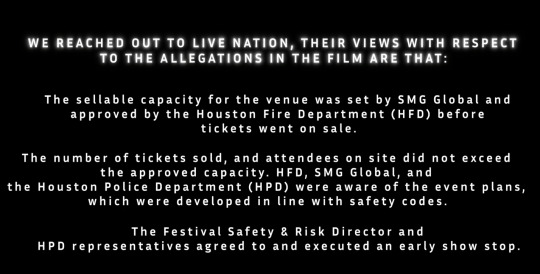
But as the final scenes fade, it’s clear the damage was already done—and that no statement can rewrite the reality of what unfolded that night.
It’s revealed that all ten wrongful death lawsuits filed against Live Nation, Travis Scott, and other named defendants have been quietly settled out of court—for undisclosed amounts.
And yet, just three years after the Astroworld tragedy, Travis Scott made headlines once again—this time for breaking records with the highest-grossing solo rap concert tour in history, generating over $210 million in revenue.
The tour was produced by none other than Live Nation.

I know there's still so much more to cover—much of the documentary focuses on the emotional testimonies of witnesses recounting what they felt and who they lost that night. Trainwreck: The Astroworld Tragedy is currently streaming on Netflix and runs for 1 hour and 20 minutes.
Special thanks to director Yemi Bamiro for creating a documentary that gives space to the voices that mattered most.

Does the documentary place 100% of the blame on Travis Scott? No. But it absolutely sheds light on the role he played and the choices he made.

Thank you for taking the time to read this. The loss of Franco has stayed with me—deeply. The details of this event still haunt me, even now. I remember being at work when tweets started flooding in about what was happening at the festival. I hadn’t heard from Franco, but I figured that was normal—he was at a concert, after all.
But as the night went on, and reports started confirming fatalities, I felt it in my gut. Something wasn’t right. And when I saw Franco’s name among the list of those who had passed… I can't even put that moment into words. That night changed everything for me. I promised myself I would never attend a festival this large, this unregulated, no matter who was performing.
I do not support Travis Scott. I understand that stage lighting makes it hard to see, and I get that in-ear monitors can drown out a lot—but there were multiple points where he paused. He could have done more. He should have done more.
Given his long history of encouraging reckless behavior at past shows, it’s hard for me to believe he truly cared about what was happening right in front of him. Maybe that’s my emotional heart speaking—but it’s how I feel, and I stand by it.
#astroworld tragedy#trainwreck astroworld#astroworld documentary#astroworld netflix#travis scott accountability#live nation criticism#festival safety#concert safety awareness#astroworld victims#crowd crush awareness#trauma processing#nihilum critical post#music industry accountability#trainwreck documentary review
24 notes
·
View notes